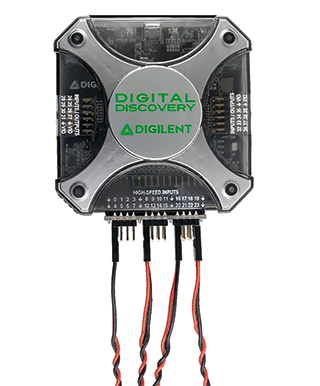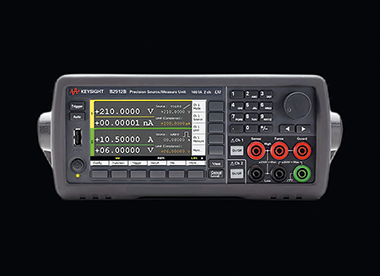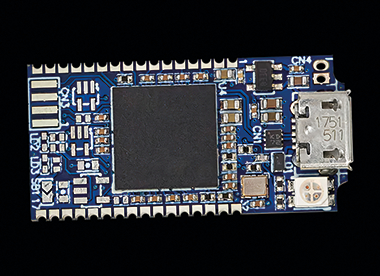
For many embedded systems developers, the term edge computing can seem redundant. Stemming originally from the world of web content delivery, it describes a server that can deliver content closest to the user who requested it. Today it is seen more as describing a topology that enables data to be processed at the location where it was generated, and is most likely used to resolve issues of latency. As a result, the locally processed data does not have to wait for a response from a cloud service or rely upon an Internet connection. These are precisely the type of systems embedded engineers have developed for decades, evaluating data from various sensors and processing them in real-time to issue control commands.

However, regardless of whether you are building an edge computing system or consider yourself more of a traditional embedded systems engineer, signals and interfaces will still need to be analysed, microcontrollers will need to be programmed, and the system will need to be interfaced with sensors.
Many design engineers now work from home or have limited resources available. Test and measurement equipment accordingly needs to be compact and easy to store. The Digilent Digital Discovery is one of a range of portable, USB-powered tools that have entered the market in recent years (Figure 1). Just 80 mm on each side and 25 mm high, this 80 g device packs in a digital logic analyser, a waveform generator, a bus protocol analyser, and more.
In analyser mode, the Digital Discovery can capture eight inputs at up to 800 MS/s, 16 inputs at up to 400 MS/s, or 32 inputs at up to 200 MS/s. Signal visualisation is provided for Windows, Linux, and macOS X with Digilent’s WaveForms software. This multi-purpose software package has an intuitive interface, placing each measurement function in a new tab, much like a web browser.
Perhaps the cleverest capability is the StaticIO module. This allows specific inputs on the Digital Discovery to implement simple visual outputs such as a seven-segment display, LEDs, or a progress bar. On the output side, the user interface can implement switches, buttons, and sliders, and open drain, open source, and three-state pins. This is ideal for implementing simple user or debugging interfaces without having to source switches and LEDs.
The protocol analyser feature allows the user to understand what data is really going back and forth, decoding the standard UART, I2C, SPI, and CAN interfaces. There is even support for C-like scripting for I2C and SPI to test interfacing with new devices. And, for those regularly working on AVR microcontrollers, there is even a flash programming capability.

A digital pattern generator is also included. As well as outputting patterns, it can also be programmed to implement state machines or combination logic.
Many innovative applications rely on an excellent analogue understanding of passive components and signals. However, one of the challenges is characterising such devices or replicating complex input signals to test newly developed software algorithms. Equipment such as Keysight’s B2900B/BL Precision Source/Measure Unit (SMU) allows accurate measurement or sourcing of both voltage and current in a compact, benchtop design shown in Figure 2. Available in both single- and dual-output models, they support ±210 V, ± 3A (DC), and ±10,5 A (pulsed) outputs, with a measurement resolution down to 10 fA and 100 nV.
Consisting of a voltage and current source, a current and voltage meter, coupled with an arbitrary waveform generator (AWG), it integrates multiple instruments into a single housing. Measurements can be made using two wires, although the four-wire method (also known as Kelvin mode) is also supported for low resistances or high currents. This makes the B2900B/BL ideal for analysing photovoltaic cells, power semiconductors, and power management devices such as low-dropout regulators (LDOs). Although the SME includes a compliance feature which limits voltage and current to minimise device damage, users can also specific limits that result in a shutdown, just like the protection mechanisms of a power supply. A high capacitance measurement mode is also available to combat the oscillations caused by large capacitive loads.
The AWG allows pulses, repetitive signals, and even custom waveforms to be generated. Engineers may create signals of up to 100 000 steps using familiar spreadsheet software. These are easily downloaded using one of several software applications optimised for different use cases. One option is BenchVue that supports Windows users. It is best suited to those looking for a visual way to control the SME and evaluate its results, complementing other existing Keysight test equipment. Alternatively, a web interface is accessible via the built-in LXI compliant server. Further options are also available if these don’t meet your needs.

Except for the most straightforward application code, developing embedded systems requires access to the target microcontroller’s memory and register. This demands a competent debugging tool such as the STLINK-V3MODS mini debugger and programmer, which is suited to the popular range of STM32 microcontrollers (Figure 3).
This tiny debugging probe measures just 15 x 30 mm and, with its castellated contacts along the longer edge, is designed to be soldered directly to the target system. It avoids the risk of connector damage during development, and minimises the potential for poor connectivity. Its USB micro-B connector operates according to USB 2.0 specifications.
The connections to the microcontroller operate at 3,0 to 3,6 V, although the pins are 5,0 V tolerant. JTAG is supported, although most developers will prefer the ARM-specific SWD (Serial Wire Debug) interface due to its lower pin count. The Serial Wire Viewer capability, available on many Cortex-M3, M4, M7, M32, and M33 processers, is also supported. It enables a limited trace capability to share the entry/exit times of interrupts and functions, notifications of events, changes in memory cell content, or even the output debugging strings. While nowhere near as powerful as a full trace interface, it can offer hope in resolving complex software bugs or timing-related application issues.
The STLINK-V3MODS also provides a virtual COM or serial port. Strings or debugging data are transferred via a direct connection to the MCU’s UART interface, while control inputs or configuration data can be easily downloaded. A bridging capability is also included, allowing firmware downloads or custom messages to be exchanged over USB to SPI, I2C, or CAN-interfaced devices. Finally, the flash memory of a connected STM32 MCU can be offered to the host PC as a mass storage device. This allows the programming of binary files through simple drag-and-drop, using the host’s file explorer.
While edge computing can seem a little like the emperor’s new clothes for dyed-in-the-wool embedded systems developers, the fact remains that you can never have enough test equipment and tools at your disposal. Many of the cleverest embedded applications make simple use of everyday physical properties of components and effects, but these require careful testing under laboratory conditions to characterise and quantify them. Today’s array of compact, highly integrated test equipment makes this more accessible than ever, especially when working from home. Finally, ironing out the kinks in software is simplified with today’s modern debugging solutions. While simple breakpoints and programming are standard features, virtual serial interfaces and simple trace make the developer’s life much easier.
| Email: | [email protected] |
| www: | www.trxe.com |
| Articles: | More information and articles about TRX Electronics |

© Technews Publishing (Pty) Ltd | All Rights Reserved